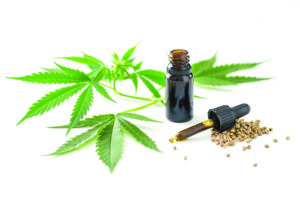 As cannabis becomes more accepted in the medical community, a rising number of seniors are trying it, especially for pain.
As cannabis becomes more accepted in the medical community, a rising number of seniors are trying it, especially for pain.
Ileane Kent, 80, has spent years vaping nightly. A breast cancer survivor, she got a medical marijuana card in June 2020 so she wouldn’t have to risk going to her supplier’s house. Barbara Blaser, 75, dealt with the pain and anxiety produced by a complicated surgery with edible marijuana, which came in the guise of a chocolate-covered blueberry every morning and evening. Harry B. Lebowitz, 69, enjoys smoking a joint in his backyard every night while his partner drinks her vodka and soda.
Cannabis Use Among Seniors Rising
A recent analysis culled from the National Survey of Drug Use and Health concluded that the use of marijuana among those over 65 rose 75% from 2015 to 2018 — from 2.4% to 4.2%. It jumped again in 2019 to include 5% of seniors. The lead author expects the trend, which is particularly strong among women and the affluent, to continue to increase sharply.
“It’s rare to see that much change in a three-year period,” said William Jesdale, an epidemiologist at the University of Massachusetts.
Legality of Marijuana Use
Although most marijuana use remains illegal at the federal level, researchers theorize that the increasing number of states legalizing pot combined with the trend away from prescribing opioids for pain has boosted the number of seniors willing to give cannabis a try.
The $17.5 billion legal cannabis industry has taken note, with some dispensaries offering senior discounts and free delivery. Retailers have sent cannabis advocates to talk to residents in assisted living facilities or picked up seniors at a retirement development to bring them to the dispensary, complete with a catered lunch, product information and a special discount.
Does Pot Work?
The efficacy of products containing marijuana is still debatable. The effect of pot was “modest” to alleviate nausea and vomiting due to chemotherapy, muscle spasms caused by multiple sclerosis, some sleep disorders and chronic pain, according to a National Academy of Science report.
Older adults adding pot to other medications and/or alcohol may be at increased risk of negative drug interactions and falls. Cannabis is known to increase heart rate and possibly blood pressure, but a Journal of the American College of Cardiology review failed to find direct evidence linking cannabis to coronary events.
Of more concern is seniors combining cannabis with anti-seizure medications and/or blood thinners, since there is little room for error. Talk to your doctor if you use cannabis and are planning to have surgery. Anesthesia drugs and post-operative pain management may require adjustment.
Like many healthcare professionals, researcher Dr. Benjamin H. Han advocates a “start low, go slow” regimen and he warns older patients who smoked pot in their youth about higher THC concentrations in modern products. Typically, seniors seek marijuana to treat four conditions: pain, insomnia, neuropathy and anxiety. There is also research supporting the use of cannabis to improve cognitive function.
There are four main routes to take cannabis: inhalation, oral, sublingual and topical. All are a little different and you may have to try more than one to find what works for you.
• Inhalation delivers active compounds to your lungs and compounds are delivered to your brain in about 15 minutes. There are two ways to inhale: smoking and vaping. Smoking involves burning cannabis flower. Vaping uses a device to heat the cannabis flower or concentrate to just below the point of combustion, releasing the active compounds into a vapor.
• Oral ingestion takes place through edibles or tinctures. Edibles include cannabis-infused drinks, baked goods and gummies. It may take anywhere from 20 minutes to three hours to feel the effect.
• Sublingual administration. Tinctures are created by steeping cannabis in alcohol. The liquid is placed under the tongue using an eye dropper, where it is absorbed by the many blood vessels located there and the rest travels to the stomach. The benefit is an immediate effect from the cannabis absorbed into the blood and a delayed effect from the cannabis that travels to your digestive tract.
• Topical products deliver cannabinoids through the skin via pads or cream to deliver localized relief, usually for muscle soreness or joint pain. No matter what product you use, you won’t get any psychoactive effects from topical application. It may take an hour or two for effects to kick in.
How Much THC?
Ask your doctor or other healthcare professional how much to use, and make sure they know what other drugs you’re taking. Start with a very low dose and remember some methods of ingestion are slow to take effect.
“Older adults generally need less, because their metabolism has slowed,” says Eloise Theisen, president of the American Cannabis Nurses Association and a geriatric nurse-practitioner. “They can have a delayed onset, so it’s easier to overconsume, especially with products that taste good.”
Another concern is the accidental consumption of edibles by children. It is very important that you treat your edibles like poison and keep them somewhere safe. A large dose can cause changes in a child’s blood pressure, heart rate, severe tiredness, trouble breathing and even coma.
Consult With Your Doctor First
Cannabis may become an important part of your healthcare regimen. Marijuana may help you sleep better or free you from constant pain. It could reduce anxiety and worry. It’s more available than ever, and there are endless resources to help you decide how you’d like to try it. Just remember to consult with your doctor first, start with a very low dose and make sure to keep your cannabis products away from children.
SCSA (Society of Certified SeniorAdvisors)
The SCSA educates and supports specialists in aging dedicated to improving lives of older adults.
800-653-1875 | csa.us




Leave a Reply